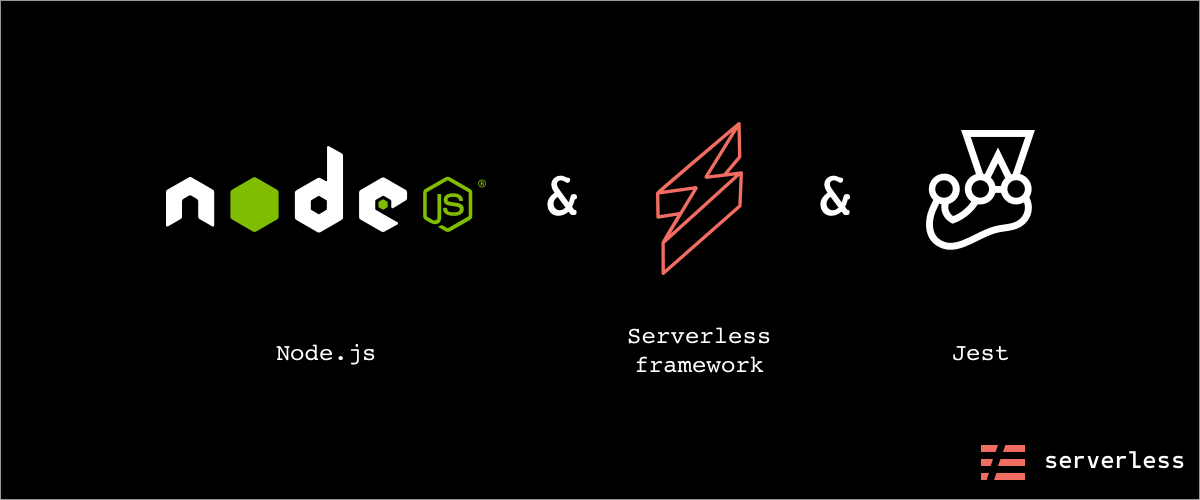
- Npm serverless tutorial software#
- Npm serverless tutorial code#
- Npm serverless tutorial download#
GitHub webhooks are an ideal use case for serverless, as they can be linked to a Lambda function through an API Gateway, and that function is only triggered when the specified activity occurs. stackery deploy -stack-name 'serverless-webhooks' \ Stackery deploy will deploy the newly created stack into your AWS account. stackery create -stack-name 'serverless-webhooks' \ Stackery create will initialize a new repo in your GitHub account, initializing it with the contents of the referenced blueprint repository. You can deploy the completed example into your own AWS account using these two Stackery CLI commands:


Npm serverless tutorial software#
The following software or services are used in this tutorial: The following repository is referenced throughout this tutorial: Rest assured, the overall functionality of Stackery remains the same.įor the most up-to-date visuals and instructions, please refer to the written versions of the tutorial available below each video. You may notice some differences between the current version and versions used to record our video guides.
Npm serverless tutorial code#
Step-by-step written instructions with code examples and screenshotsĪs we continue to develop Stackery, there may be improvements made to the design of the application.  A gif showing a preview of what you'll be doing in that step. An AWS Lambda Function that is activated by changes to a designated GitHub repository. An AWS API Gateway that listens for a POST event from GitHub. In the root directory, create a new folder called config and then create a new file inside of this folder called db.js.įrom this file we will export our database credentials as follows: module.This tutorial will teach you to connect a GitHub webhook to a serverless function that responds to your GitHub activity.īy the end of the tutorial, you will have deployed into your AWS account: Here is my code for the serverless.yml file service: serverless-tutorial-rds It will follow the standard REST architecture, making use of the following HTTP methods: We’ll build our API to create, edit and delete Todo objects. The handler.j s file is where we will maintain the logic for our functions.īuilding the Serverless REST API Architecture The Serverless.yml file is where we define our functions, the events that trigger them, and the resources they use. Open the project in your text editor of choice and you’ll see what files were created for us. You can use the flag -y to skip the various npm package settings. Firstly navigate into the new projects directory and then run npm init. Now to add a package.json file by initialising the directory as a new npm package. Once you have done with the above command, you would be having the sample serverless framework template folder generated for Node.js app. I’ll give my project name as serverless-tutorial-rds. Select AWS Node.js as your template and then provide a meaningful name for the project.
A gif showing a preview of what you'll be doing in that step. An AWS Lambda Function that is activated by changes to a designated GitHub repository. An AWS API Gateway that listens for a POST event from GitHub. In the root directory, create a new folder called config and then create a new file inside of this folder called db.js.įrom this file we will export our database credentials as follows: module.This tutorial will teach you to connect a GitHub webhook to a serverless function that responds to your GitHub activity.īy the end of the tutorial, you will have deployed into your AWS account: Here is my code for the serverless.yml file service: serverless-tutorial-rds It will follow the standard REST architecture, making use of the following HTTP methods: We’ll build our API to create, edit and delete Todo objects. The handler.j s file is where we will maintain the logic for our functions.īuilding the Serverless REST API Architecture The Serverless.yml file is where we define our functions, the events that trigger them, and the resources they use. Open the project in your text editor of choice and you’ll see what files were created for us. You can use the flag -y to skip the various npm package settings. Firstly navigate into the new projects directory and then run npm init. Now to add a package.json file by initialising the directory as a new npm package. Once you have done with the above command, you would be having the sample serverless framework template folder generated for Node.js app. I’ll give my project name as serverless-tutorial-rds. Select AWS Node.js as your template and then provide a meaningful name for the project. 
Running the command serverlesswill guide you through creating a new serverless project. By using the -g flag, the package is installed globally on your machine. Let’s start by installing the serverless npm package. Once you are done with all the pre-requisite installation and setup,we can now proceed ahead in developing the REST API backend application.
Postman, a super handy tool we’ll be using to test our API. Npm serverless tutorial download#
We’ll be using pgAdmin to create our database tables, you can download that here. An AWS account, which you can create here. Node.js version 6.x or later installed locally on your machine. Fully verifying the implemented REST APIs using Postman running the application on the localhost server on current machine, later migrated the deployment completely on the AWS Lambda and AWS API Gateway services. Backing up the application with an Amazon Relational Database Service (RDS) for PostgreSQL,using pgAdmin for creation of database and table with the required columns. Developing a Serverless framework based application using Node.js to build and deploy it to AWS Lambda and AWS API Gateway. Our data will be stored using Amazon Relational Database Service (RDS) for PostgreSQL. In this article, I’ll be making use of the Serverless Framework to build and deploy a simple Node.js API to Lambda and API Gateway.








 0 kommentar(er)
0 kommentar(er)
